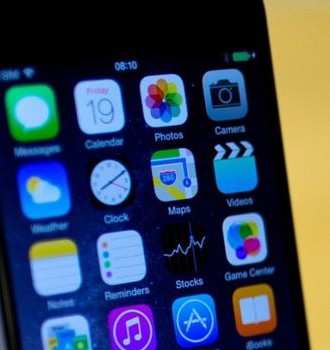Find out the week’s top mobile stories from around the world.
This week.. The EU introduces new roaming charge rules, Apple undercuts Facebook in augmented reality platform war, are smartphone apps bad for your finances? mobile subscribers hit 5BN globally and much more…

The EU’s new roaming rules
The Economist
Waiting for one’s smartphone to find a signal after landing has become a familiar part of flying. Travellers gaze at their devices, anxious for a connection and the adrenaline rush that accompanies receiving a few hours’ worth of notifications in one blast. Meanwhile, a complex process is occurring.
The local mobile network is calling up the flyer’s home network, asking if they will accept the connection fee, and then connecting only with its assurance that it does. Once this connection is made, the traveller is said to be roaming: using their device on a foreign network. Roaming has been the culprit in many cases of “bill shock”, when travellers return from holiday to find that they have run up huge phone bills. But as of June 15th, roaming fees are no more, within the EU at least.
The battle to end roaming fees has always been about European political goals and market unification as well as consumer protection. It began in 2006. Viviane Reding, then the European commissioner responsible for telecoms and media regulation, announced the project by saying that “it is only when using your mobile phone abroad that you realise there are still borders in Europe”.
Read more…
Apple undercuts Facebook in the augmented reality platform war
Tech Crunch
Facebook’s grand vision for augmented reality was that it would make it easy for any developer to build and distribute an AR experience — as long as it lived inside Facebook’s app. But Apple has once again used its control of the mobile operating system to build a wider platform than Facebook can, this time with AR that lives inside developers’ own apps.
This already played out with mobile apps.
On the open web of desktops, Facebook built a massively powerful game platform that spawned huge businesses like Zynga. On mobile, it couldn’t do the same. Apple forbid developers from building app stores inside their apps. Facebook tried to build its own HTML5 game platform inside its native app anyway.
Read more…
Smartphone apps ‘bad for my finances’
BBC
A third of people surveyed about their smartphones said apps made them spend at all hours and hit their finances.
They said the convenience made them spend more or lose track of money, the Financial Services Compensation Scheme (FSCS) survey suggested.
Two-thirds said apps made it easier to spend, particularly from bed at the start or the end of the day.
A separate report suggested that voice and gesture technology will transform the way we pay.
Read more…
Number of mobile subscribers hits 5BN – GSMA
Information Age
The world’s mobile industry has signed up its five billionth unique mobile subscriber, according to real-time data from GSMA Intelligence, the research arm of the GSMA.
The 5 billion milestone means that more than two-thirds of the global population is now connected to a mobile service. It has taken four years to add the latest one billion subscribers.
“Reaching the 5 billion subscriber milestone is a tremendous achievement for an industry that is only a few decades old, and reflects the many billions of dollars that mobile operators have invested in networks, services and spectrum over many years,” commented Mats Granryd, director general of the GSMA.
Read more…
Mobile ‘accounting for 57% of all video plays’
TBI Vision
Mobile viewing accounted for nearly 57% of all video plays worldwide in Q1 2017 marking an all-time high for video use on smartphones and tablets, according to new research.
The Ooyala Q1 2017 Global Video Index said that mobile video plays reached 56.47% in Q1 – with smartphone plays accounting for 46.9% and tablet plays for 9.57%.
The research said that mobile “continues to be a major driver of OTT growth” and said that it had recorded a rise of mobile video plays in every quarter since the Video Index was launched in 2011.
The Q1 Index also said that for the first time, long-form content—greater than 20 minutes in length—now represents the majority of time spent watching video across all screen sizes, at 63%.
Read more…
Johnson & Johnson head of digital and innovations: ‘for millennials, mobile is like breathing’
The Drum
While the smartphone market may be slowing down, it is still registering growth, unlike the tablet market, which seems to be in a perpetual decline without any signs of revival any time soon.
According to the latest data from market research and analysis company, International Data Corporation (IDC), the tablet market shrunk by over thirteen percent in the year-ending quarter compared to the same period in 2014, thereby capping an entire year of decline in the tablet market for the very first time since the category went mainstream earlier this millennium.
Read more…
China networks ‘to spend $180bn on 5G in seven years’
Capacity Media
Three Chinese operators will spend 48% more on 5G than 4G, driven by HDTV, says bank report.
China will spend $180 billion on 5G infrastructure over seven years from 2019, according to a new investment bank study.
This marks a 48% increase in investment by China’s three operators – China Mobile, China Telecom and China Unicom – according to Hong Kong-based South China Morning Post (SCMP), which reported the study this morning.
According to the report, almost 40% of China’s mobile users will be on 5G by 2022 – a total of 588 million 5G customers.
Read more…
Google is making it easier than ever to give any app the power of object recognition
The Verge
Smartphones have fast become the new frontier of artificial intelligence. Algorithms that used to run in the cloud, beaming results down to our devices via the internet, are now being replaced by software that runs directly on phones and tablets. Facebook is doing it, Apple is doing it, and Google is (perhaps) doing it slightly more than anyone else.
The latest example of mobile AI from the Silicon Valley search giant is the release of MobileNets, a set of machine vision neural networks designed to run directly on mobile devices. The networks come in a variety of sizes to fit all sort of devices (bigger neural nets for more powerful processors) and can be trained to tackle a number of tasks.
Read more…
Apple reportedly working to make your medical history mobile
CNET
How would you like to have your entire medical and health history at your fingertips — literally?
No more making multiple calls to get your records — all of your doctor visits, lab results and prescriptions available on your phone, so that you can share the data with new physicians at a moment’s notice? Sound pretty handy? Apple reportedly thinks so.
The tech titan is in talks with developers, hospitals and other industry groups about bringing data such as detailed lab results and allergy lists to the iPhone, CNBC reported Wednesday.
Read more…
Mass IoT uptake requires more natural interfaces
Mobile World Live
While IoT services are becoming more widespread, less than optimal interfaces are slowing uptake and limiting the vast potential of new IoT applications, panellists in a session on the subject at CES Asia said.
Ichiro Amimori, CEO of smart clothing company Xenoma (pictured, right) explained a big issue is many people aren’t comfortable with the technology. He argued he smartphone isn’t always the best interface for connecting to the internet, as demonstrated by people walking around with their eyes glued to the screen and often bumping into objects.
“People shouldn’t feel the technology, but we’re not there. If we can optimise the interface to the internet for humans, then more people will immerse themselves in IoT services,” he said.
Read more…
More teens watch TV on demand than live, as smartphone ownership continues to grow
Mobile Marketing Magazine
According to research by media agency MediaCom, 38 per cent of teens consume TV through on demand services most frequently, compared to the 35 per cent that choose watching live TV as their most common way to view programming.
Netflix is the most used streaming service with 58 per cent of 13-19 year olds using the service, but is the only platform that hasn’t experienced growth in the past year. Amazon Instant Video is used by 32 per cent of teens, up from 24 per cent last year, while 15 per cent of teens use NowTV and 11 per cent Apple TV.















